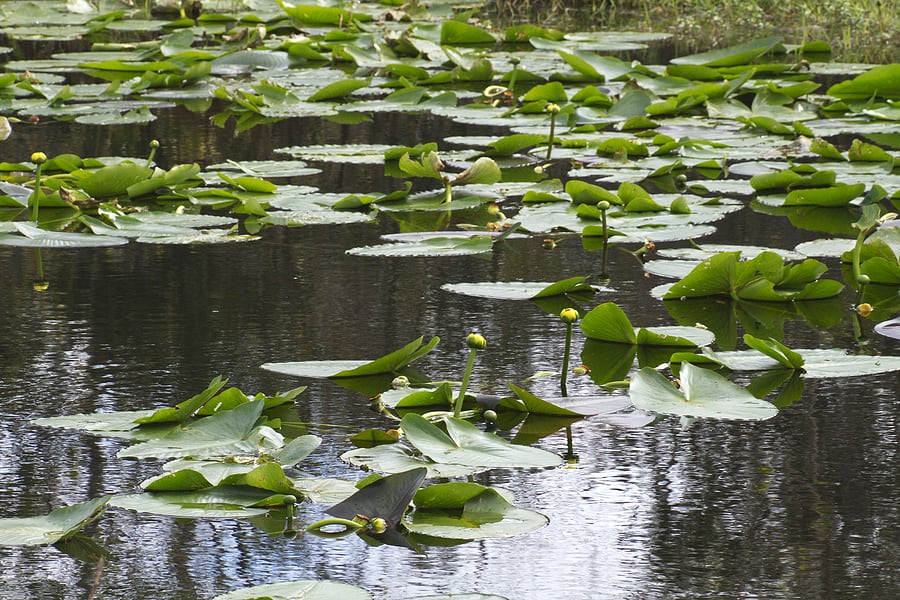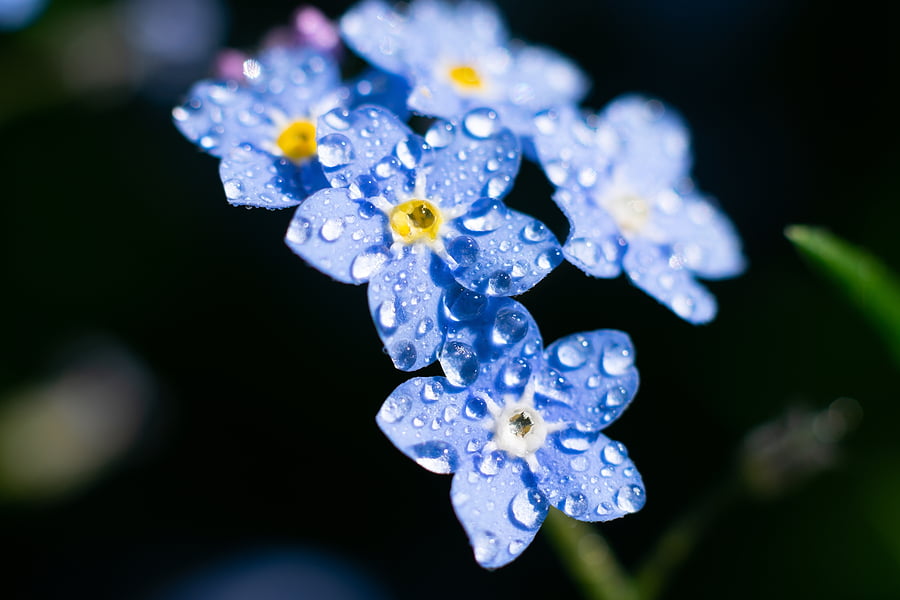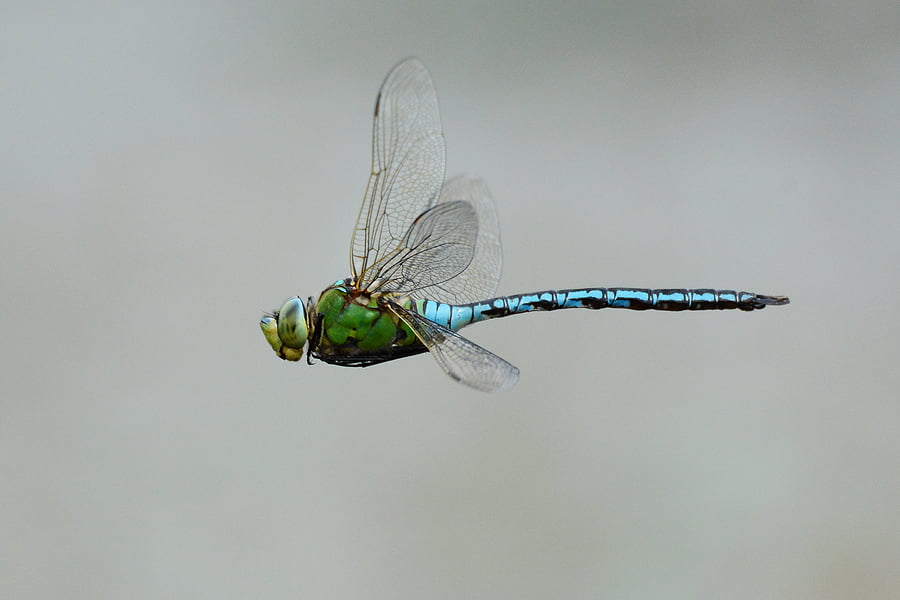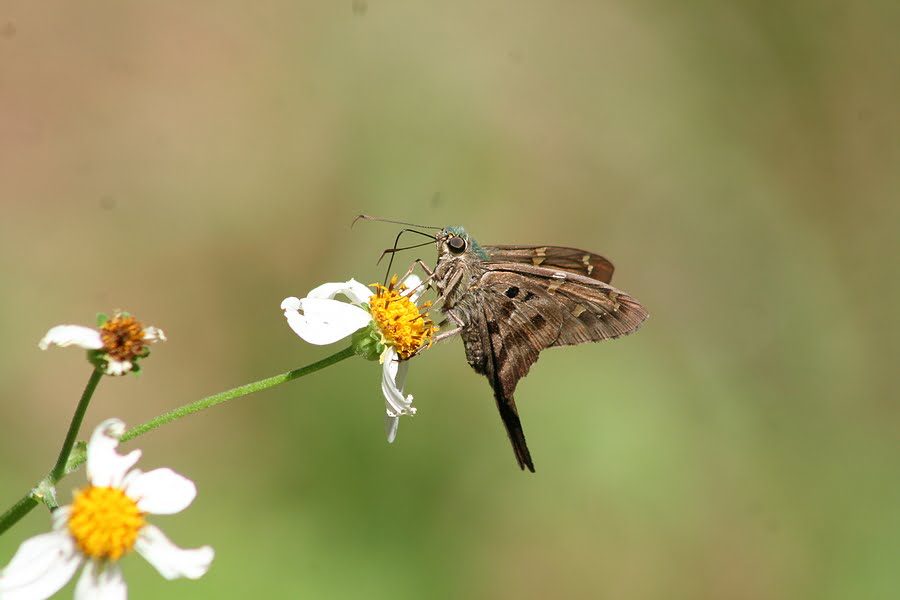
Top Reasons Why Your Wildlife Pond Might Not Be Thriving
10th October 2023
10 Frequently Asked Questions About Garden Wildlife Ponds
15th November 2023As the garden foliage fades into autumnal tones, the pond may seem to become dormant after the busyness of summer. However, it is a crucial over wintering site for many species of insects and amphibians. Therefore it’s still important to make sure that there is a good mixture of pond plants in place to provide food and shelter and maintain good oxygen levels.
Most pond plants will die back over winter and very few are evergreen and active during the colder months. However, some that are worth considering are:
Willow moss
Water moss is a species of native pondweed that is an excellent oxygenating plant that is hardy and will survive cold winters, and is at its best in the cooler months. It also provides food and shelter for wildlife. It has feathery green leaves, can grow quite densely and is favoured by newts and tadpoles for the cover it provides.
Water starwort
Water startwort is another hardy native oxygenator that likes the cooler months, and forms dense floating mats of tiny green rosettes which provide excellent habitat and cover for lots of pond creatures. It can be a little difficult to establish and also a bit emphemeral, appearing to disappear before popping up elsewhere in the pond.
Hornwort
Hornwort is better in the warmer months in nutrient rich ponds and tends to sink towards the bottom of the pond and blacken during very cold winters. It still does provide good winter habitat however, especially if winter temperatures aren’t too severe.
Juncus species
This group includes Hard rush, Soft rush and Corksrew rush, which are all generally evergreen so will be active during the winter months and maintain some colour and interest in the pond. They are also known to transfer oxygen down into their root systems both helping to oxygenate the water and encourage the growth of aerobic bacteria, both of which promote good water quality.
Fibre Optic Plant
The Fibre optic plant is a very attractive non-native grass of the sedge family that retains its foliage through the winter and is a good water oxygenator. It is hardy but may not survive temperatures below minus 10C.
Before you introduce any new plants, remove any excess decaying vegetation that could pollute the water. Give the plant material a shake to dislodge any aquatic creatures and leave it at the side of the pond for a day or two to give any remaining wildlife a chance to crawl back into the pond. Also, if you have nearby trees that shed their leaves into the pond ensure these are removed regularly to stop them rotting into the water, or invest in a pond cover net.
Frogs and toads can breathe through their skin, so sometimes they may choose to overwinter in the sludge at the bottom of the pond. This can be a risky choice if the winter is very cold and the pond freezes solid. However, it can mean that they have more opportunities to mate in the springtime.
Insect larvae such as dragonfly pass the winter under the protection of leaf cover in ponds, while nymphs of dragonflies, damselflies and mayflies also live and actively feed in ponds over winter. Here are some suggestions for the best pond plants to help wildlife in winter.
Other plants that are very good for wildlife in your pond are:
Bog bean
The Bog bean plant will produce pretty star-like white flowers with pink tips from April to May. They are a native plant that will form floating mats on the surface of the pond, providing egg laying sites for dragonfly. They are also one of the earlier flowering pond plants, so very beneficial to pollinators, and provide good cover before some of the other surface cover plants like Water lilies and Amphibious bistort get going.
Dragonfly and damselfly nymphs may use the plant stems to climb out of the water as they metamorphosise into adults, and the leaves generally provide a useful perching place for wildlife. The plant will grow best in full sun or part shade, and needs space to spread so they are not ideal for very small ponds.
Marsh Marigold
The Marsh Marigold is a hardy native plant that is one of the earliest flowering pond plants, giving a good display from March to May and occasionally as early as February if the winter is mild. They also have a second flowering later in the summer so are a really good performer. They are a versatile plant that will either grow on the margins of ponds or in bog gardens. The wide leaves provide shelter and egg laying sites for insects.
Yellow Flag Iris
Yellow flag iris is a native marginal pond plant.with strong upright sword-shaped leaves that provides a useful passage out of the water for emergent insects and shelter for amphibians. In the spring the plant produces vibrant yellow flowers that will brighten up the garden and attract pollinators. The under-rated variegated Yellow flag has very striking cream and green leaves that give a lovely contrast to the plain green foliage of most pond plants.
Water forget-me-not
Water forget-me-not is a creeping native plant that will give good coverage across the edge of the pond, and will also ramble through and climb up some of the taller pond plants This provides shelter for aquatic creatures and it is favoured by newts who lay their eggs in the folded leaves. The plant will also produce attractive small blue flowers from late May to September, attracting pollinators.
Other tips to keep your pond healthy and take care of wildlife over winter
Use a simple ice breaker such as a floating rubber ball
In very cold conditions, the biggest threat to plants and wildlife is the pond freezing over. This is most serious when the whole pond freezes solid, but if it is deep enough (at least 60cm deep) this should rarely if ever happen in the UK. Wildlife can also get trapped in thick layers of ice.
The best solution is to simply float an inflatable ball on the surface of the water to help keep some movement going and make it more difficult to freeze. It is not recommended to pour boiling water on ice or to try and break it with a heavy impact, because this can disturb wildlife.
Clear any lying snow from the surface of the pond to allow more light to the plants. This will help them continue to be able to photosynthesise and produce oxygen, which will help wildlife to survive. If the toxic gases that are released from decomposing leaves are not allowed to escape, then this can lead to ‘winterkill.’
This is when amphibians die because they are not able to breathe through their skin. However, this should rarely happen unless the pond is severely lacking in oxygenating plants and remains iced over for weeks at a time.
If you do notice any dead frogs or toads floating on the surface of the water, remove their bodies to prevent the water becoming contaminated.
Elsewhere in the garden
Some frogs and toads will choose to overwinter on land rather than in the pond. Therefore it’s a great idea to provide them with a suitable habitat. They will look for damp places that are sheltered from the extremes of cold. This can be as simple as a pile of stones or logs, or in a disused animal burrow.
You could even build a hibernaculum, which is essentially a pit in a sunny spot that is filled with logs, branches, and rocks, with plenty of gaps in between. The contents are then loosely covered with soil and entrance tubes made from drainpipe offcuts are inserted at ground level.
As well as amphibians, the hibernaculum may attract reptiles such as lizards and small snakes. During the summer time, the soil can be sown with meadow grasses and flowers to attract pollinators.





